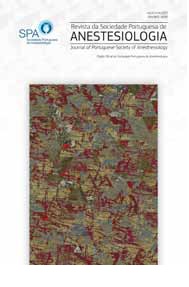Deep Brain Stimulation to Control Pain
DOI:
https://doi.org/10.25751/rspa.3380Keywords:
Deep Brain stimulation, Pain Management, Craniotomy, Conscious SedationAbstract
Deep brain stimulation applies electrical stimuli to subcortical targets (through intracranial parenchyma pacing) and it has been increasingly used for pain control. The purpose of this study is to review the fundamentals of the technique, its indications and patient selection and perform an analysis on the perioperative anesthetic management. An online search (PubMed) was conducted. Relevant references were selected and reviewed.
Deep brain stimulation induces a descending inhibitory modulation pathway and decreases neuronal hyperexcitability. It is indicated in patients whose symptomatology is refractory to conventional therapy or in presence of serious adverse pharmacological effects. The selection of patients should be multidisciplinary. Intracranial electrodes placement is performed by craniotomy using a stereotactic technique. Most cases are undergone with an awake patient, during the whole procedure or partly, with the intention of using clinical monitoring for greater accuracy in the localization of therapeutic targets as well as for detecting potential complications. There is, however, no evidence of superiority of any anesthetic technique. The use of target controlled infusion with propofol and/or remifentanil, which allows a more accurate titration of sedation, and dexmedetomidine, due to its pharmacodynamic profile, are conceptually promising for intraoperative management.
The success rate varies between 19% and 79% and the incidence of perioperative complications between 12% and 16%. The anesthesiologist should simultaneously provide optimal surgical conditions and comfort to the patient, minimize interference with monitoring and diagnose and promptly treat complications.Downloads
Downloads
How to Cite
Issue
Section
License
Articles are freely available to be read, downloaded and shared from the time of publication.
The RSPA reserves the right to commercialize the article as an integral part of the journal (in the preparation of reprints, for example). The author should accompany the submission letter with a declaration of copyright transfer for commercial purposes.
Articles are published under the terms of the Creative Commons Attribution Non-Commercial License (CC BY-NC).
After publication in RSPA, authors are allowed to make their articles available in repositories of their home institutions, as long as they always mention where they were published.


